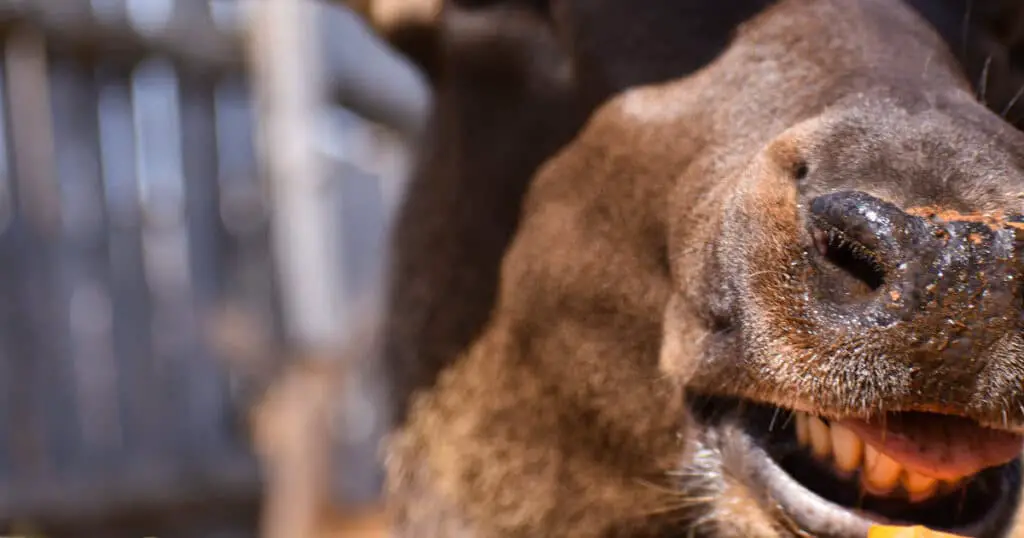An animal’s teeth are one of the most useful tools for identifying its age. Teeth give invaluable insight into what the creature ate while it was alive, and they can even tell you how old the animal was when it died. Understanding how to read the story of deer teeth is a useful skill for hunters and researchers alike.
Let’s explore all the most fundamental facts about deer teeth and how you can use them to find out information about the deer they belonged to.
Do Deer Have Teeth?
Yes, deer have teeth. They need their teeth to grind and chew vegetation.
Deer teeth are very small and flat, and they’re angled inwards towards the mouth. You can sometimes see them peak out of a deer’s mouth if they lift up their lips while eating.
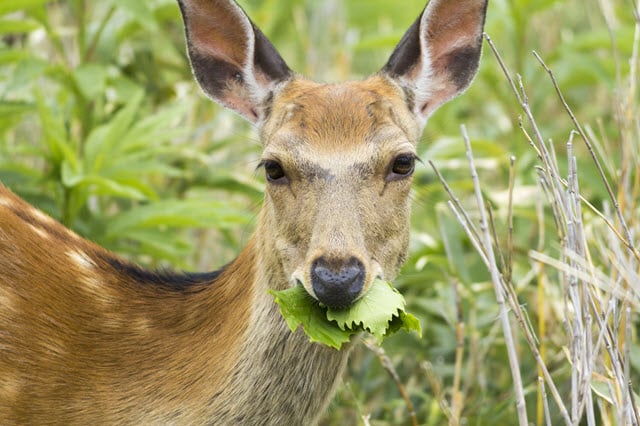
Only fully grown adult deer have all of their teeth, and it usually takes about two to two and a half years for all of them to come in.
Baby deer have just four teeth when they’re born. These are their baby teeth, otherwise known as “milk teeth.”
Fawns that are still nursing never need to chew anything. They are completely sustained by their mother’s milk.
Like humans, baby deer eventually lose their milk teeth and grow in their adult set of teeth. An adult white-tailed deer has 32 teeth.
These include:
- 12 molars
- 12 premolars
- 6 incisors
- 2 canines
The main purpose of each of their teeth is to help the deer chew and grind up its herbivore diet.
What Kind of Teeth Do Deer Have?
The specific kind of teeth that a deer has are three premolars and three molars. Premolars are typically located on the front of the jaw, while molars are located near the back of the jaw.
Premolars are responsible for cutting up food or ripping it up so the deer can chew it easier.
Deer primarily eat different types of plants and vegetation that grows on the ground, so they need sharp front teeth in order to easily rip the plants off the ground.
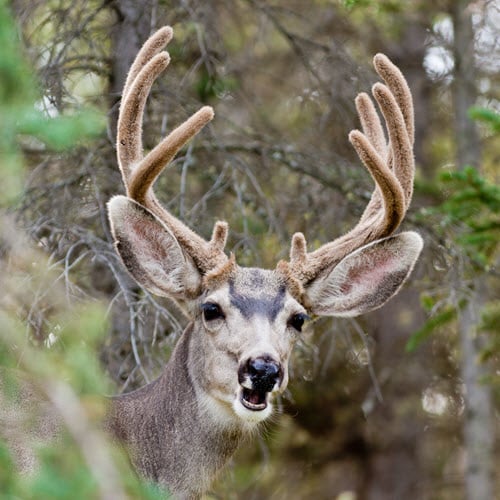
Molars are responsible for grinding up food so the deer can swallow it more easily. These teeth are located towards the back of the jaw closer to the throat.
What Do Deer Teeth Look Like?
Each deer tooth has four layers, each with a specific purpose. They include the following:
- Enamel, the hard white outer shell of the tooth
- Dentin, the soft brown inner part of the tooth
- Infundibulum, a hollow part in the middle of the tooth
- Tartar, the brown staining on the outside of the tooth
Deer teeth have enamel for the same reason human teeth do. It helps to protect the tooth from being worn down and getting damaged during chewing and grinding.
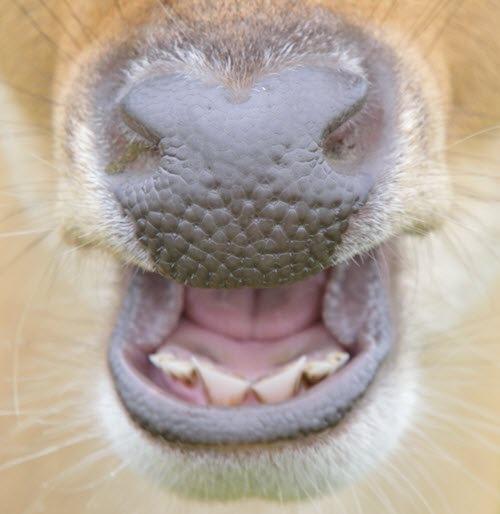
Dentin acts as a reinforcement for the enamel, giving the tooth a solid foundation to support its structure.
Finally, tartar is the brown staining that is found at the roots of the teeth, on the edges of the jaw bone. It forms because deer aren’t able to clean their teeth. Food residue and bacteria build up over time.
You can use tartar to help determine deer age. The darker the staining, the older the deer.
Why Do Deer Have Flat Teeth?
Deer teeth are flat because deer are herbivores, meaning they eat plants rather than meat. Plant matter is more difficult to break down, and sharp teeth aren’t effective with this kind of food.
Deer wouldn’t be able to properly grind their food if they didn’t have flat teeth. The food wouldn’t be broken down properly and the animal would have trouble swallowing its food and develop digestive problems.
Deer teeth are wide as well as flat. The further you look back into a deer’s jaw, the wider the teeth become.
They usually have the appearance of groups of two or three teeth fused together, with multiple rough crowns protruding out.
This also helps deer with breaking down tough plant material. The wide surface area gives the deer more room to grind and break down tough vegetation, making it easier to digest.
Lastly, deer teeth have a rough texture to help them break down plant matter even further.
Deer teeth are well-equipped for breaking down plant matter as much as possible because deer have very sensitive stomachs and are prone to digestion issues.
If the plant matter is too big to swallow, deer will have trouble digesting and passing it, leading to more health issues.
What Are Deer Teeth Used For?
Deer are prey animals, and they’re extremely vulnerable to danger when they’re eating. It makes them less alert than they are otherwise.
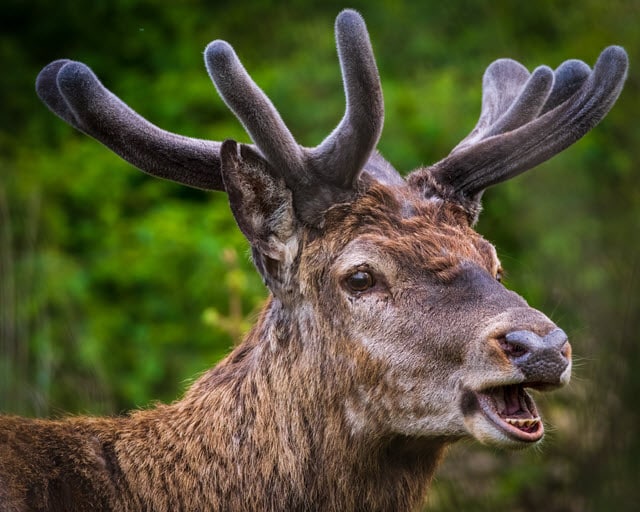
That is why quick grinding and swallowing are paramount. Deer must eat quickly in case they need to escape an approaching predator.
While it’s rare, deer can also have canine teeth if they eat small birds or other animals. These are canine deer teeth are used to cut away at the meat and make small pieces to chew and grind up.
The molars are in charge of grinding food up, while premolars and canine teeth slice and tear at the deer’s food.
Unique Features of White-Tailed Deer Teeth
White-tailed deer have mostly the same teeth as other deer species. They have premolars near the front of their jaw, and molars near the back.
Additionally, this species has two sharp incisors located on the front of either side of their jaw. Incisors are long, thin, and very sharp teeth that make it easy for an animal to bite and tear at its food.
A white-tailed deer’s incisors are located a significant distance from the rest of its teeth.
The diastema is the space between the incisors and the premolars/molars.
It’s fairly common for white-tailed deer to have incisors on their bottom jaw. They rarely have incisors on the top half of their jaw, but it’s not impossible.
White-tailed deer didn’t always have incisors. They used to have canines located where premolars and molars usually are.
It’s more common for deer to have canines than incisors, but years of evolution have made this possible. The canines have simply shifted forward to look and function more like incisors.
Experts believe upper incisors are an evolutionary throw-back to how deer looked in prehistoric times.
Less than one percent of white-tailed deer have upper incisors. When these teeth are found, they are usually small and not very sharp.
How To Determine Deer Age By Teeth
While you might not be able to identify the exact day a deer died, examining its teeth can give you a pretty good idea of the window.
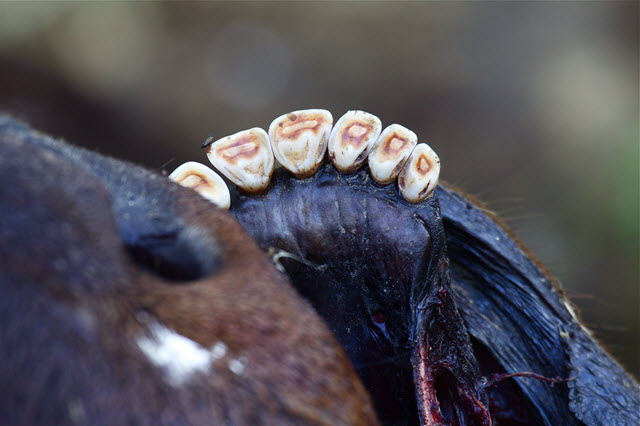
One of the most useful features for analyzing a deer’s age is how worn its molars are. A general rule of thumb is that teeth get approximately one millimeter shorter each year.
Let’s discover ways deer teeth can tell you the animal’s approximate age.
Less Than A Year Old
Fawns are born with about three or four teeth because they don’t need as many yet in order to survive. They mainly feed on their mother’s milk until they reach at least ten weeks of age.
A doe typically provides milk for its fawns for between twelve and sixteen weeks. This is the point where the fawn is fully weaned.
Milk doesn’t require any chewing or grinding, so the fawn doesn’t need any teeth in order to eat. You can be sure a deer is a fawn if it has fewer than six teeth in its lower jaw.
The enamel and structure have to develop and push the fawn’s baby teeth out, and this usually takes until the fawn turns a year to a year and a half.
More Than A Year Old
A deer more than one-year-old has all of its adult teeth, including all three premolars and three molars. But there is another way you can tell the age of a deer, letting you determine a more accurate age.
A younger deer’s teeth won’t be fully developed and may have parts of a tooth’s structure showing. A common example of this is a significant amount of dentin showing in a deer’s teeth.
Some mistake this for being an indicator of old age. Sometimes this is true, but if you also notice missing teeth, it’s probably a young deer.
A younger deer’s teeth will look more rigid and have more white enamel on them.
More Than Five Years Old
The two main signs of a deer being more than five years old are:
- heavily worn teeth ridges
- a wide enamel strip.
Years of chewing and grinding up plants means the teeth are a bit worn down and the edges aren’t as sharp.
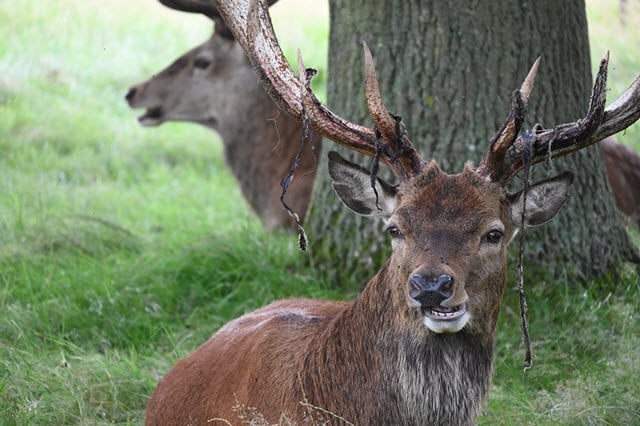
A deer of this age will have more visible dentin than a younger deer.
Generally speaking, the more brown, soft dentin you can see, the older the deer.
But deer can live for far longer than five years old. How can you pinpoint a much older deer‘s age?
Unfortunately, there isn’t a reliable way of determining the exact age of a deer older than five years old. But there is a relatively reliable rule of thumb: the more worn the teeth, the older the animal.
Generally speaking, a deer’s teeth will be completely worn down (to its gum line) by the time it’s between 10 and 11 years old.
Why Do Some Deer Have Canine Teeth?
There are certain types of deer that have canines because they occasionally eat meat. These include:
If these animals eat meat, it’s usually small mammals or birds found on the forest floor. Their canines help them to tear and rip at the tough meat, while the rest of the molars do the grinding so the deer can swallow the food.
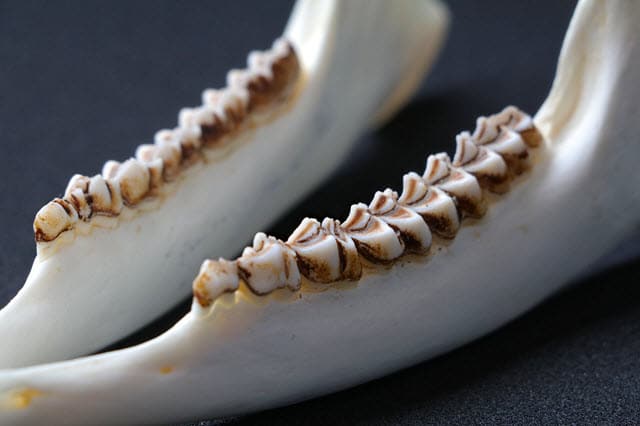
A deer running low on minerals in their regular diet may eat meat. These minerals include:
- Calcium
- Salt
- Phosphorus
In the winter months, when plants aren’t as readily available, deer may turn to small meat sources. While deer canines aren’t common in deer species, they still play a vital role in helping the deer to survive.
Final Thoughts: Deer Teeth
As we’ve learned here, these animals have teeth with a shape and design that fits their diet. Hunters and researchers can check deer teeth to figure out the age of the animal when it died.
Let’s review some of the features of deer teeth:
- Relatively small size
- Flat
- Angled inwards
- All adult teeth present by two-and-a-half years old
- Perfect for grinding and chewing vegetation
We’ve also learned some deer teeth characteristics that can help you figure out an animal’s age:
- Number of teeth
- Amount of visible dentin
- How worn down the teeth are
- Tartar and staining
And if you’d like to learn about why some deer have tusks resembling fangs, you’ll probably enjoy reading our article on “vampire deer.”

